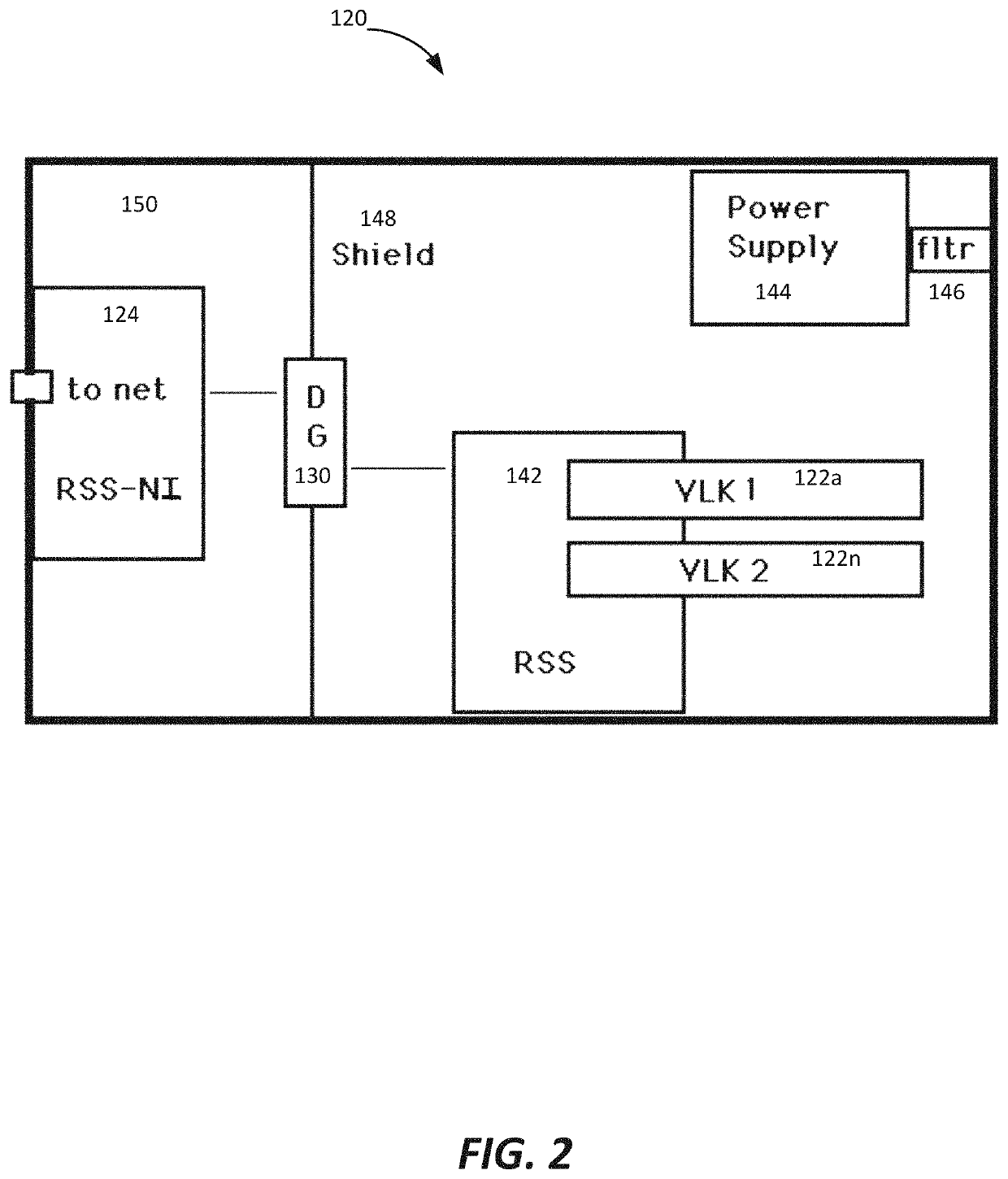System and method for securely storing and utilizing password validation data
a validation data and password technology, applied in the field of computer security, can solve the problems of limiting attempts to guess passwords, affecting the security of passwords,
- Summary
- Abstract
- Description
- Claims
- Application Information
AI Technical Summary
Benefits of technology
Problems solved by technology
Method used
Image
Examples
Embodiment Construction
[0055]There is a need to end the password arms race once and for all. Embodiments of the present invention are intended to be impregnable to the attacks described above. Combined with software-imposed limits on failed login attempts, these embodiments offer full security even with relatively simple passwords. Certain embodiments combine unique hardware features with techniques to improve the security operations of conventional systems as described below.
[0056]Referring now to FIG. 1, an exemplary system 100 for securely storing and utilizing password validation data includes a password management module (PMM) 110 connected to a restricted secret server (RSS) 120. The RSS 120 includes a very large key (VLK) module 122 which in one embodiment is inside the RSS 120 and in another embodiment is removable from the RSS 120.
[0057]A multiuser computer system server farm 40 can be integrated with system 100. The server farm 40 represents one or more computers. Users 30 connect to the server ...
PUM
 Login to View More
Login to View More Abstract
Description
Claims
Application Information
 Login to View More
Login to View More - R&D
- Intellectual Property
- Life Sciences
- Materials
- Tech Scout
- Unparalleled Data Quality
- Higher Quality Content
- 60% Fewer Hallucinations
Browse by: Latest US Patents, China's latest patents, Technical Efficacy Thesaurus, Application Domain, Technology Topic, Popular Technical Reports.
© 2025 PatSnap. All rights reserved.Legal|Privacy policy|Modern Slavery Act Transparency Statement|Sitemap|About US| Contact US: help@patsnap.com



